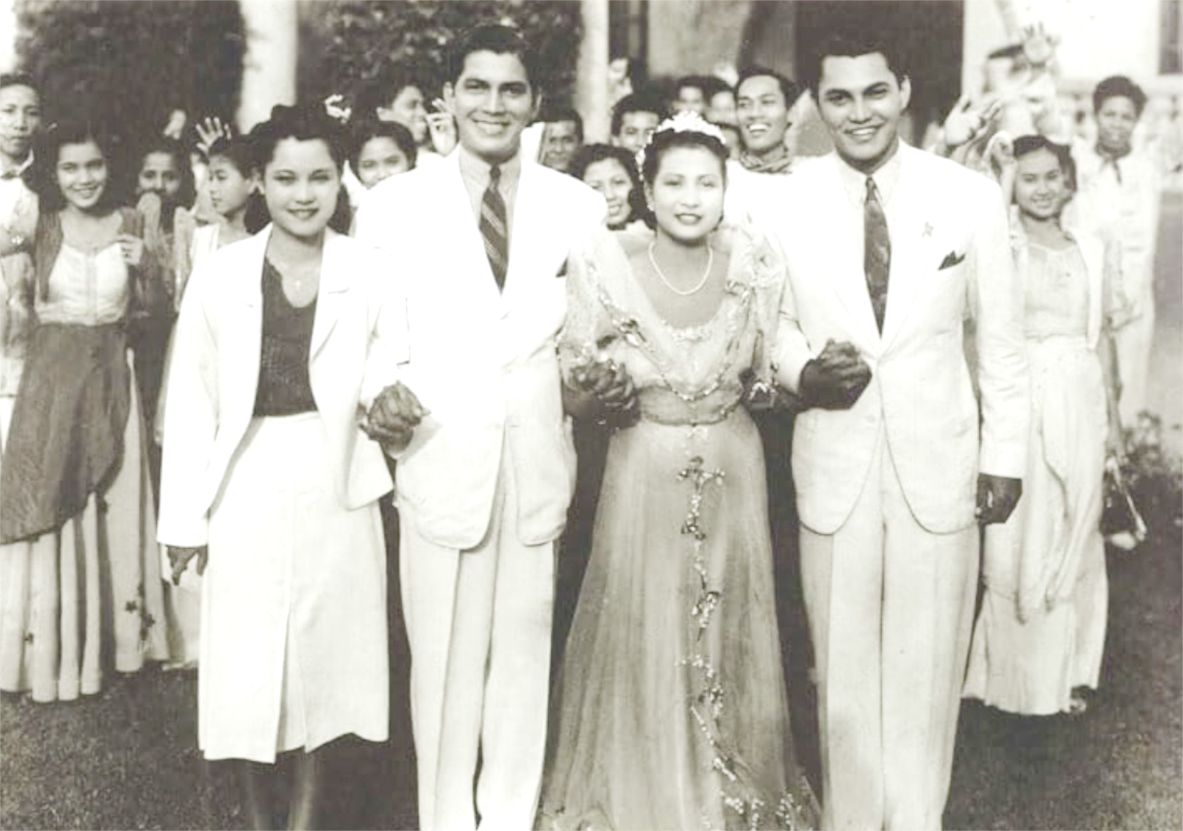A quiet Sunday led the families of Mila del Sol, Fernando Poe Sr., Fleur de Lis (Mona Lisa), Doña Sisang de Leon, among others to the Metropolitan Theater on Aug. 20 to witness the launch of the restored version of LVN Studio’s first prewar commercial release musical, Giliw Ko (1939).

Most of the audience were teary-eyed and overwhelmed with the impact of the film’s legacy and the time capsule experience it gave to the family members and production crew. This Carlos Vander Tolosa masterpiece premiered on July 29, 1939, more than 84 years ago at the same venue, the Metropolitan Theater.
The musical follows Guia (Mila del Sol) as she ventures into a singing career in Manila through the help of a successful conductor Antonio (Ely Ramos). The unrequited relationship she experienced with the taken Antonio made her realize that farmer Jose (Fernando Poe Sr.) is her one true love. Fleur de Lis popularly known as Mona Lisa, who was 17 years old at that time, plays Antonio’s love interest.
Leo P. Katigbak leads the two-year restoration of Giliw Ko through the ABS-CBN Sagip Pelikula program. “Restoration affords us to see the films before as our parents or grandparents enjoyed them,” he says. “We see the similarities in humor, possibly its cyclical nature as well as provide a generational link.”
The restored MET is like a time capsule for Leo. “Walking through its corridors and carpeted floors, you get a sense of the past and seeing this massive black and white image play gave me a sense of what people might have felt when cinema was still young and LVN was unveiling its maiden offering,” he says.

Celeste Legaspi was also in the audience swooning for Fernando Poe, Sr. “I loved scenes where Fernando Poe was shown with his dimples and rippling muscles, so guapo! I also loved the scene where Mila del Sol was with her trio of female probinsyanas singing with a can. Soo cute!” The bamboo orchestra in the final scene was creatively done in her opinion. “The thinking behind it was awesome!” she beamed.
Stage actor Bobby Martino, who was once in the cast of Miss Saigon. felt it was turning back time. “Privileged that I was in the audience with other lucky people watching a film from almost a hundred years ago at the venue where it was first shown,” he said. “We never knew its importance until we experienced it.”
Film critic and Film Institute expert Nonoy Lauzon was happy with the restoration efforts. “I felt pride for Philippine cinema and for the efforts of showbiz families like Doña Sisang’s to help build a prosperous film industry for the country,” he said. “I was particularly moved by the scene where the lead character played by Mila del Sol as the next prima donna of the airwaves insisted on singing a vernacular song in defiance of the colonial repertoire for the radio in those days,” he said. “In that instance, audiences were made aware of the noble purpose of cinema as an instrument to propel national consciousness and as a means to give premium to cultural expressions the Filipinos identify as their own.”

The film made us aware of the early onset of colonial mentality. Clodualdo “Doy” del Mundo Jr. reunited with his Kakabakaba Ka Ba? director Mike de Leon (grandson of Doña Sisang) and screenwriter Raquel Villavicencio. “The scene of Guia’s performance in Manila—she insists to sing a Tagalog song; then, in the middle of her number, she remembers her lover, Jose; they are singing the theme, Giliw Ko,” he recalls. “It must have been a discovery for the filmmakers and film viewers at the time.”
The 75-year-old screenwriter lectures, “Film can bring you into the mind of the character. It can go beyond real time and bring us to the character’s imagination.” The genius filmic device was introduced by Carlos Vander Tolosa to the Philippine film industry.
We hope more support to restore timeless Filipino film classics will be given to our film archivists. They are the unsung heroes of Philippine cinema. Kudos to the National Commission for Culture and the Arts and the Metropolitan Theater for giving us this historical Giliw Ko reunion!